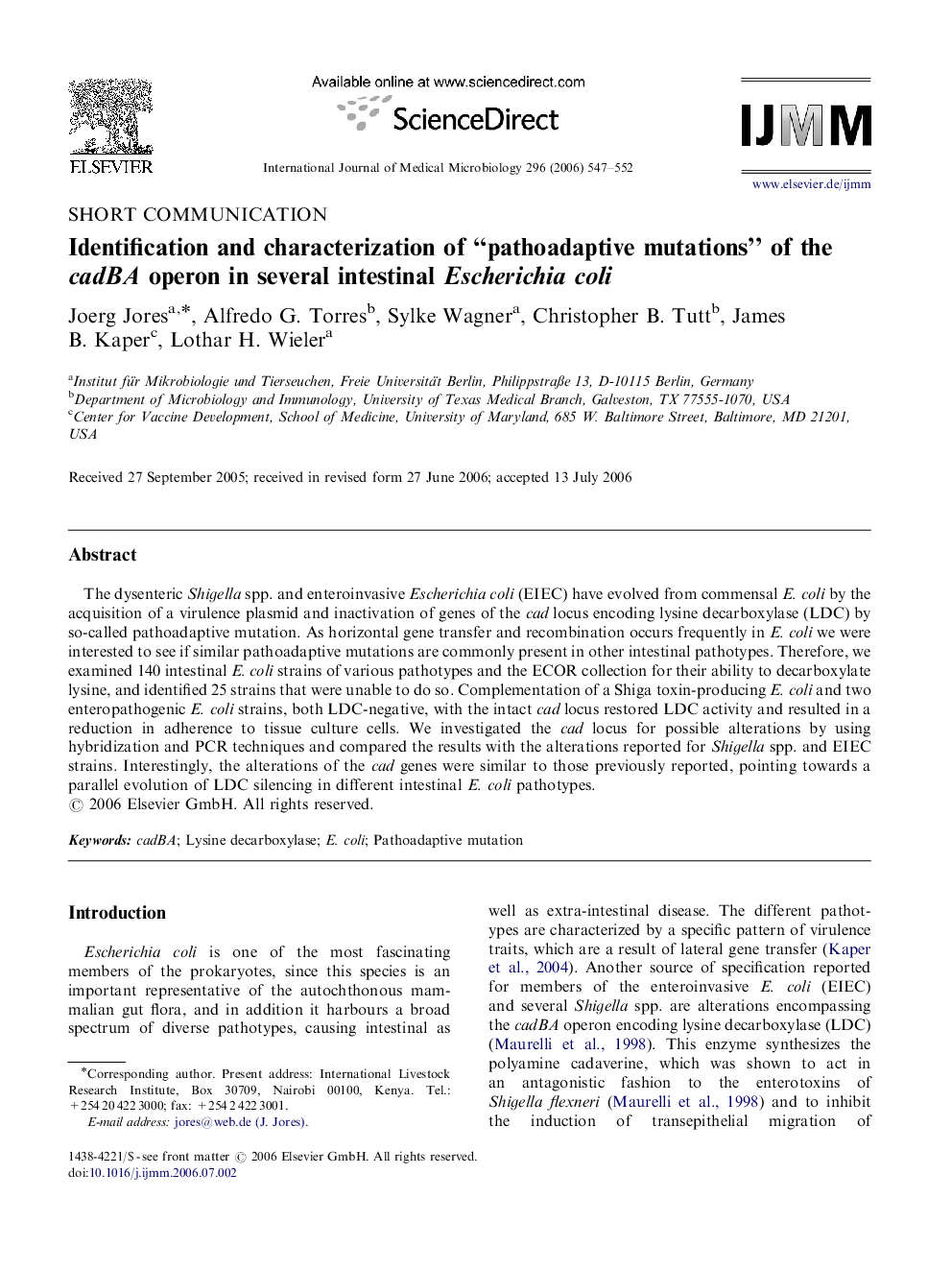| Article ID | Journal | Published Year | Pages | File Type |
|---|---|---|---|---|
| 2054584 | International Journal of Medical Microbiology | 2006 | 6 Pages |
The dysenteric Shigella spp. and enteroinvasive Escherichia coli (EIEC) have evolved from commensal E. coli by the acquisition of a virulence plasmid and inactivation of genes of the cad locus encoding lysine decarboxylase (LDC) by so-called pathoadaptive mutation. As horizontal gene transfer and recombination occurs frequently in E. coli we were interested to see if similar pathoadaptive mutations are commonly present in other intestinal pathotypes. Therefore, we examined 140 intestinal E. coli strains of various pathotypes and the ECOR collection for their ability to decarboxylate lysine, and identified 25 strains that were unable to do so. Complementation of a Shiga toxin-producing E. coli and two enteropathogenic E. coli strains, both LDC-negative, with the intact cad locus restored LDC activity and resulted in a reduction in adherence to tissue culture cells. We investigated the cad locus for possible alterations by using hybridization and PCR techniques and compared the results with the alterations reported for Shigella spp. and EIEC strains. Interestingly, the alterations of the cad genes were similar to those previously reported, pointing towards a parallel evolution of LDC silencing in different intestinal E. coli pathotypes.
